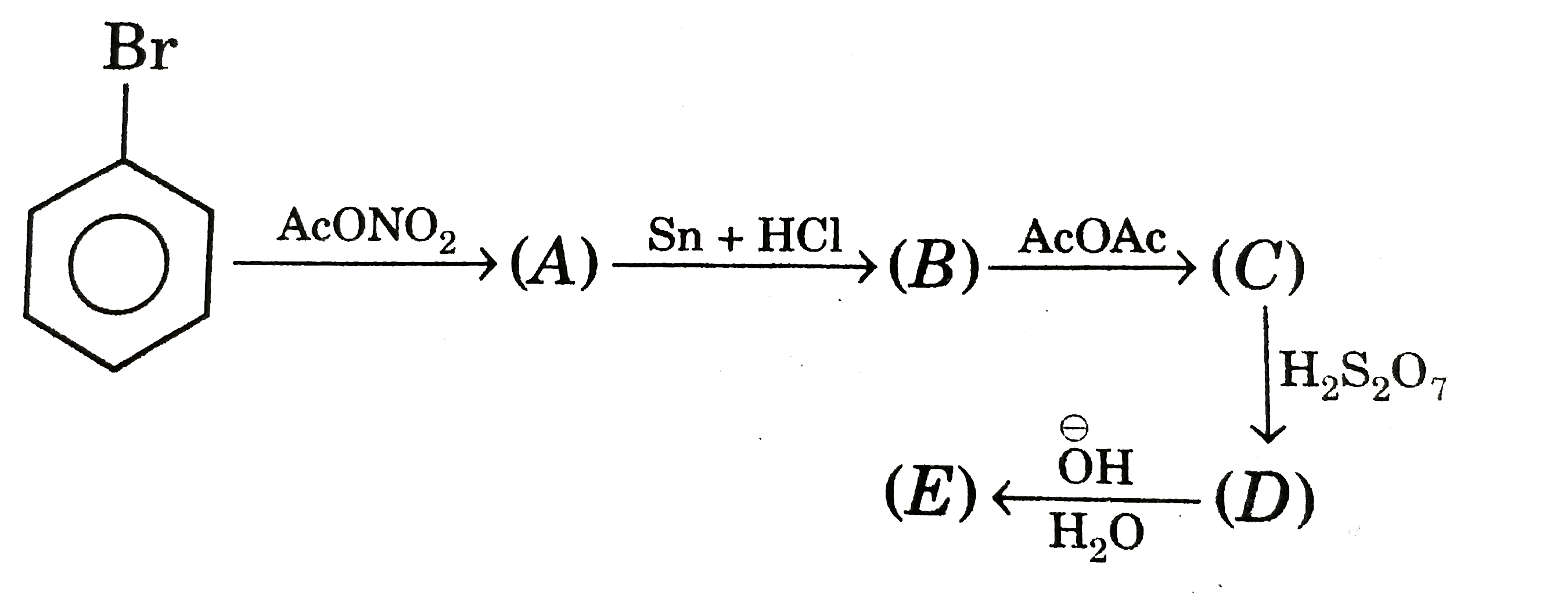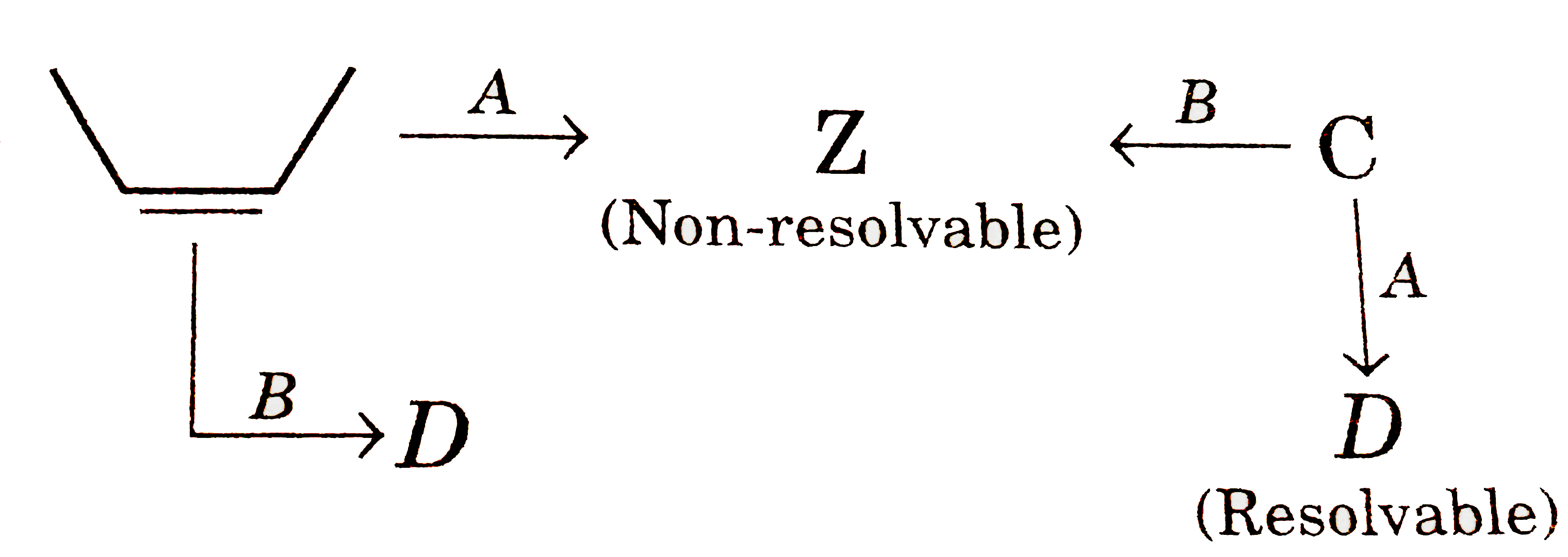Select the correct statements for a particle in a state of motion.
If speed of the particle changes then velocity of the particle must change and it must have non-zero acceleration.
If velocity of the particle change then its speed must also change and particle must have non-zero acceleration.
When particle moves in a straight line with changing speed then its velocity may remain constant.
When velocity of the particle changes then its speed may or not change but particle must have some acceleration.
The correct Answer is:a,d
To solve the question regarding the correct statements for a particle in a state of motion, let's analyze each statement step by step.
1. Understanding Velocity and Speed:
- Velocity is a vector quantity that includes both magnitude (speed) and direction.
- Speed is the magnitude of velocity and is a scalar quantity.
2. Statement Analysis:
- Statement A: "If the speed of a particle changes, then the velocity of the particle must also change."
- Analysis: This statement is true. If the speed (magnitude of velocity) changes, it directly implies that the velocity (which includes direction) must change as well.
3. Statement B: "If the velocity of the particle changes, then the speed of the particle must also change."
- Analysis: This statement is false. A particle can change its velocity by changing direction while maintaining the same speed (e.g., uniform circular motion). Therefore, the speed does not necessarily have to change when velocity changes.
4. Statement C: "When the particle moves in a straight line with a changing speed, then its velocity may remain constant."
- Analysis: This statement is false. If the speed is changing, the velocity must also change because velocity is dependent on both speed and direction. Thus, if speed changes, velocity cannot remain constant.
5. Statement D: "When the velocity of the particle changes, its speed may or may not change, but the particle must have some acceleration."
- Analysis: This statement is true. A particle can change its velocity while maintaining constant speed (as in circular motion), and if there is a change in velocity, there must be acceleration.
Conclusion:
Based on the analysis:
- Correct Statements: A and D
- Incorrect Statements: B and C
Final Answer:
The correct statements for a particle in a state of motion are A and D.
- Velocity is a vector quantity that includes both magnitude (speed) and direction.
- Speed is the magnitude of velocity and is a scalar quantity.
- Statement A: "If the speed of a particle changes, then the velocity of the particle must also change."
- Analysis: This statement is true. If the speed (magnitude of velocity) changes, it directly implies that the velocity (which includes direction) must change as well.
- Analysis: This statement is false. A particle can change its velocity by changing direction while maintaining the same speed (e.g., uniform circular motion). Therefore, the speed does not necessarily have to change when velocity changes.
- Analysis: This statement is false. If the speed is changing, the velocity must also change because velocity is dependent on both speed and direction. Thus, if speed changes, velocity cannot remain constant.
- Analysis: This statement is true. A particle can change its velocity while maintaining constant speed (as in circular motion), and if there is a change in velocity, there must be acceleration.
Based on the analysis:
- Correct Statements: A and D
- Incorrect Statements: B and C
The correct statements for a particle in a state of motion are A and D.
Topper's Solved these Questions
- BOOK - MODERN PUBLICATIONCHAPTER - MOTION IN A STRAIGHT LINE EXERCISE - COMPETITION FILE ( D.(MULTIPLE CHOICE QUESTIONS))9videos
MOTION IN A STRAIGHT LINE
- BOOK - MODERN PUBLICATIONCHAPTER - MOTION IN A STRAIGHT LINE EXERCISE - COMPETITION FILE (ASSERTION REASON)9videos
MOTION IN A STRAIGHT LINE
- BOOK - MODERN PUBLICATIONCHAPTER - MOTION IN A STRAIGHT LINE EXERCISE - COMPETITION FILE ( B.(MULTIPLE CHOICE QUESTIONS))74videos
MOTION IN A STRAIGHT LINE
- BOOK - MODERN PUBLICATIONCHAPTER - MOTION IN A PLANE EXERCISE - Chapter Practice Test15videos
MOTION IN A PLANE
- BOOK - MODERN PUBLICATIONCHAPTER - OSCILLATIONS EXERCISE - Practice Test (For Board Examination)12videos
OSCILLATIONS
Similar Questions
Knowledge Check
- Question 1 - Select One or More
Select the correct statement(s)
ARatio of gm/litres and % (w/v) of a solution is independent fo solute substanceBRatio of % (w/v) and molarity of a solution depends on solute substanceCRatio of % (w/v) and molarity of a solution depends on solvent substanceDRation of % (w/v) and ppm for any solution same - Question 2 - Select One
Selecte the correct statement.
AFranklin Stahl coined the term ''linkage''BPunneet square was developed by a British scientistCSpliceosomes take part in translationDtransduction was discovered by S. Altman - Question 3 - Select One
Select are correct statement:
AMetal nitrides produce N2 gas on hydrolysisBAcetic acid is a weaker acid in liquid NH3 while stronger in waterCIn Ostwald's process, 'NO' is produced by the reaction of N2 with O2DNO2 is called as mixed anhydride
 Select correct statement.View Solution
Select correct statement.View SolutionSelect the the correct statement (s)
View SolutionSelect the correct statement. For a particle moving on a straight line
View SolutionSelect the correct statement :(Only force on a particle is due to electric field)
View SolutionWhich one is the correct statement?
View Solution



